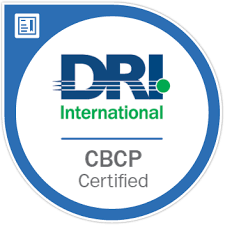
by Mike Semel, Certified Business Continuity Professional (CBCP)
When someone says ‘disaster’ our mind jumps to an image of a tornado or hurricane. However, one of the sad realities in your business life may be dealing with the sudden and tragic loss of a key employee. As with any disaster, as uncomfortable as the thought is, this situation is something you should plan for.
For many, employees are extended family members (sometimes immediate family members.) You spend more time with them than with your real family. You get to know their spouses, children, grandchildren—their wants and dreams—and you get complacent knowing that they have the skills, knowledge and relationships to take care of your customers.
In a second they can be gone—a serious illness, disability, or tragic death. You are stunned. You lost a friend. You lost a colleague. Your organization can instantly lose critical skills, institutional knowledge, and long-standing relationships built on trust.
You need to grieve. You need to help their family and your employees deal with the sudden loss. You need to work, but you are just as shell-shocked as the rest of your staff—numb, unfocused, not knowing what to say or do.
Your organization must survive, and your customers/clients/patients, employees, investors, and other stakeholders are depending on your leadership. While customers will be sympathetic, they will also be concerned about their own needs. If your employee was their main contact with your organization, you will have to build their confidence that your organization will serve them at the level they require. It is not cold or callous to have a replacement plan and active it—even before your employee is buried.
Here are some steps you can take to minimize the risk to your organization.
1. HAVE A WRITTEN PLAN.
At a time when you are shocked and numb, it is a great comfort to be able to grab a written plan that includes the contact info for critical resources you will need to begin the replacement process.
2. PLAN FOR THE SUDDEN LOSS OF EVERY KEY EMPLOYEE.
The list should include not just executives and managers, but key sales reps and specialists who are responsible for your organization’s revenue and service delivery. Who has special skills? Who has special certifications and licenses? Who owns your most critical customer and vendor relationships? While you may think it is your organization, the customers and vendors may say they do business with you because of one of your employees. (This is a good reason to make sure each customer knows more than one employee to gain faith in the breadth and depth of your organization.)
3. CROSS-TRAIN STAFF MEMBERS WHERE POSSIBLE.
Having someone step in immediately is both comforting and smart. Be prepared for employees that resist showing others what they do because they think they may jeopardize their jobs. Critical information stored only in their heads can only hurt the company.
4. HAVE A MUTUAL AID PLAN WITH ANOTHER ORGANIZATION.
If you are in an industry association, peer group, medical society, Chamber of Commerce, etc., you can probably find another member with similar needs and agree to support each other in the event of an emergency. If one of you loses a key employee, the other will send a temporary replacement to keep things going. Maybe technology tools will allow you to help each other remotely. Work this out before you are under the pain and pressure of a sudden loss.
5. HAVE GOOD DOCUMENTATION.
Being able to refer to written instructions, standard procedures, and up-to-date contact info can get someone new up to speed faster.
6. MANAGE CRITICAL PASSWORDS.
Some programs and websites, and functions like data synchronization and backup, require passwords and codes that cannot be retrieved by just anyone. Review these resources and make sure at least two people are set up by the provider. If this won’t work, require that any time a password is set or changed that an executive is given a copy for safekeeping.
7. SPEED UP YOUR RECRUITMENT PROCESS.
We have worked with organizations that have taken 45-60 days to replace a key employee because they used traditional methods of advertising and interviewing, the same as if they were just growing. Replacing a lost employee is different.
Talk to staffing agencies in your industry to see who can provide expedited recruiting while you are so busy and distracted dealing with other problems.
An IT industry peer group worked with a specialized staffing agency to create a program to quickly replace sales and technical personnel. As soon as they are notified of a lost employee, the staffing agency will immediately dedicate a recruiter full-time to find qualified candidates to interview. They will work throughout the process until a suitable replacement is found. In one case, an IT company had multiple qualified candidates to interview as soon as their late employee was buried.
8. FUND THE COSTS WITH INSURANCE.
Replacing a critical employee can be expensive. You could have $ 20,000 or more in unplanned expenses in a short period of time, and it may take some time to train the replacement before they are contributing to your bottom line.
We often think about buying life insurance on owners or business partners. Consider buying life insurance on other key employees to cover the costs you will face if they die suddenly. You could split the policy with their family. For example, you might buy $ 100,000 in life insurance and split the benefit 50/50 with their family. This would give you $ 50,000 to cover your costs and risks, and provide $ 50,000 for their family, in addition to any other coverage they may have.
Filling out a template isn't a plan. Semel Consulting has created useful business continuity plans for hundreds of small and large companies, that have used them to survive the Joplin tornado, Superstorm Sandy, and many disasters disruptions you never heard of.
MIKE SEMEL | www.SemelConsulting.com
Certified Business Continuity Professional | CMMC-AB Registered Practitioner | Certified Security Compliance Specialist | Certified Health IT Consultant | Certified HIPAA Security Professional | Certified HIPAA Administrator | Certified HIPAA Professional


